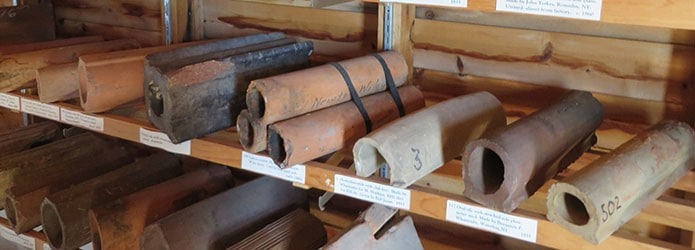Johnston House FAQs
- How old is the Johnston House?
The house was built by John Johnston in 1822.
- How extensive was the Johnston Farm?
Johnston owned about 300 acres of land. The driveway next to the Johnston House marks what was the southernmost boundary of his farm. The farm extended west to the lake and his northern boundary divided his property from that of his son-in-law Robert Swan. The house itself is the only remaining building dating from the Johnston period.
- What is tile drainage?
This is the process by which excess sub-surface water is drained off of the soil to make it more productive for agriculture, especially helpful with clay soils. The practice goes back to ancient times, with farmers past and present employing straw, sticks, stones, clay tiles or plastic tubing to guide the water off the land. John Johnston was the first farmer in the United States to use clay drain tiles for draining, such as were used in his native Scotland.
- Who was Mike Weaver?
Mike Weaver was a civil engineer with the United States Conservation Service who lived in Waterloo and worked on irrigation and drainage projects. After finding a drain tile on his farm in the 1950s, he began collecting them. By the 1990s he had over 350 tiles and related materials from around the world. He donated these materials to the Geneva Historical Society in the early 1990s, when Historic Geneva purchased and restored the Johnston House.
- Is the Johnston House wheelchair accessible?
No. Parking is in the Bottomless Brewing lot. Visitors with limited mobility may park on the grass or along the side of the gravel driveway nearest the Johnston House. Access to the house and Tile Museum building are over uneven grass and slate walkways. Neither Johnston House nor the Tile Museum are wheelchair accessible. Johnston House is accessed by two steps up to the porch. There is 1 large step up with no railing to access the Tile Museum.
- Can you take pictures or video of the Johnston House or Tile Museum?
As long as they are for personal and not commercial use, photographs and video can be taken of the house, museum, and grounds. Photographs inside the house should be taken without the use of a flash.

